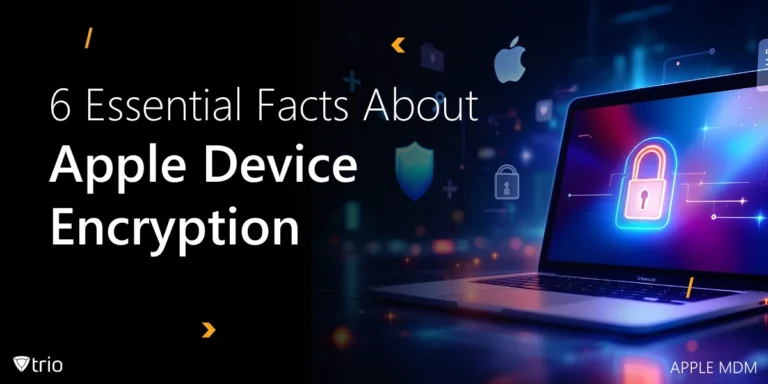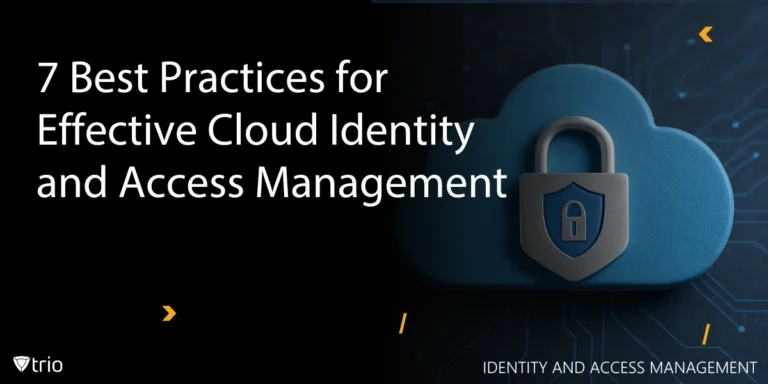In today's rapidly evolving business landscape, the ability to seamlessly integrate IT collaboration into your operations can be a game-changer. Effective collaboration within information systems is paramount for data sharing, analysis, and integration from varied sources, empowering your organization to make more informed decisions. By enhancing IT collaboration, you stand to unlock new opportunities, drive innovation, and maintain a competitive edge—key components that are essential for any business aiming to thrive in a digital-centric market.
As you delve into the world of IT collaboration, it becomes vital to understand not just the benefits but also the best practices for fostering a culture of data transparency, security, and collaborative engagement. This guide will arm you with valuable insights on establishing clear data governance, choosing the right collaboration technology, and nurturing a collaborative environment. You'll also explore how collaboration information systems like Trio MDM solutions can significantly benefit IT administrators and organizations by streamlining processes, ensuring data consistency, and aligning stakeholders for optimal performance.
Models and Types of Business/IT Collaboration
In your pursuit of enhancing IT collaboration, it's crucial to comprehend the various models and types that can be adopted within your company. Let's explore these models and how they cater to different collaboration needs:
Collaboration Models
Project-Based: In this model, the agency is responsible for the successful execution of a project, with the client setting the success metrics.
Team-Based: Here, the agency curates the team, while the client monitors the team's performance and execution.
Types of Business/IT Collaboration
Fixed-Scope: Characterized by a well-defined work scope and a pre-established budget.
Time and Material: Offers flexibility and adaptability in project execution.
Dedicated Team: Grants the client a high degree of control and flexibility.
Team Augmentation: Allows for scaling the workforce based on project needs.
Collaboration Modes
Open, hierarchical; open, flat; closed, hierarchical; and closed, flat. These modes differ based on participation openness and decision-making hierarchy.
Strategic Alliances
These are agreements combining resources and efforts temporarily to achieve strategic goals and became prominent in the 1970s and 1980s.

Understanding the Barriers to Effective Collaboration
Understanding the barriers to effective IT and business collaboration is critical for overcoming them and enhancing your company's operations. Here are some of the most common obstacles you may encounter:
Siloed Engineering Design Tools: These can restrict the flow of information, leading to a lack of integrated process optimization and creating challenges in responding to market uncertainties. By recognizing the need for integrated engineering solutions, you can begin to break down these silos.
Communication and Knowledge Sharing: Insufficient information exchange and unclear decision-making can hamper collaboration. It's essential to establish efficient communication channels and knowledge-sharing practices to avoid these barriers.
Cultural and Resource Challenges: Lack of trust, divergent goals, inadequate resources, and conflicting personalities often lead to a silo mentality. Addressing these specific collaboration challenges is key to fostering a collaborative environment.
How to Improve IT/Business Collaboration: Best Tips and Strategies
To improve IT/business collaboration within your company, consider the following best tips and strategies:
Communication Enhancement
- Practice clear, concise, and respectful communication to overcome barriers.
- Utilize appropriate channels and tools for different communication needs.
- Engage in active listening to ensure mutual understanding and respect.
Conflict Resolution
- Address personality clashes with flexibility, empathy, and a focus on common goals.
- For conflicting goals, ensure transparency and accountability from the start.
- Embrace negotiation and compromise as necessary tools for alignment.
Trust Building
- Cultivate honesty, reliability, and support within teams to build trust.
- Develop relationships and rapport to create a supportive work environment.
- Consistently follow through on promises and responsibilities to maintain trust.
Collaboration Technology
- Implement collaboration platforms like the Trio MDM solution to enhance communication and streamline IT administration.
- Collaboration technology supports IT administrators by providing a centralized platform for device and data management. Explore the benefits of collaboration technology.
Team Development
- Conduct team-building activities and share the business vision to strengthen relationships.
- Encourage departmental interaction and inspire with creative content to foster a collaborative culture.
- Experiment with new team models and learning pathways to improve collaboration.
By embedding IT employees into business units, IT can learn about business issues earlier and bring technology to address needs more effectively. IT leaders should focus on delivering on promises and demonstrating value to earn trust. Such strategies can elevate team performance, with effective collaboration boosting team efficiency, innovation, and relationships, making employees 33% more loyal.

Technology and Tools to Support Collaboration
In the realm of IT collaboration, selecting the right technology and tools is essential to facilitate seamless communication and enhance productivity. Here are some pivotal collaboration technologies and tools that can support your company's collaborative efforts:
Project and Task Management Tools
Project and task management tools cater to diverse teams with specialized solutions for project management, workflow management, and resource management, streamlining collaboration and ensuring that projects stay on track.
For comprehensive project oversight, tools like Trello, Basecamp, and Asana offer intuitive interfaces and powerful features to manage tasks effectively.
Mobile Device Management (MDM) Solutions
MDM tools enable real-time monitoring, management, and tracking of devices, crucial for BYOD policies and remote work models. They ensure a consistent configuration across devices, contributing to a predictable user experience and elevated security.
Trio, as an MDM solution, provides encryption, secure authentication, and remote wipe capabilities, which are critical for protecting sensitive company information.
Collaboration Software and Communication Tools
Filestage and BetterUp lead the pack in collaboration software, offering project workflow management and transformative enterprise solutions, respectively.
Communication is streamlined with tools like Slack, Microsoft Teams, and WebEx, which are essential for a distributed workforce.
Design and Customer Support Tools
For creative collaboration, tools like InVision and Miro provide platforms for graphic design and visual brainstorming.
Jira and Help Scout stand out in customer support, optimizing issue tracking and customer service processes.
The Role of MDM Solutions in Leveraging IT Collaboration
Mobile Device Management (MDM) solutions play a pivotal role in enhancing IT collaboration within organizations. By integrating MDM solutions like Trio MDM, IT administrators can leverage several benefits that streamline collaboration efforts:
Centralized Device Management
IT administrators can oversee and manage all company devices from a single platform, ensuring uniformity in software updates and security policies. This centralization reduces the complexity of managing diverse devices, allowing IT teams to focus on strategic collaboration initiatives.
Enhanced Security and Compliance
Compliance with regulatory standards is more manageable, as MDM solutions can enforce policies that align with industry regulations. The Trio MDM solution facilitates strict adherence to security protocols, protecting sensitive data across all devices.
Improved Communication and Data Sharing
Secure sharing of data within the MDM platform promotes transparency and collaboration, without compromising on data privacy. Real-time data synchronization features ensure that all team members have access to the latest information, fostering effective decision-making and collaboration.

Measuring and Sustaining IT Collaboration
To gauge the success of IT collaboration, it's imperative to track a range of metrics that reflect various aspects of team dynamics and project outcomes. Here's how you can measure and sustain collaboration effectively:
Team Performance Metrics
- Assess the quality of deliverables and the efficiency of processes regularly.
- Monitor the engagement of team members and the alignment of goals within the team.
- Evaluate the innovation of solutions brought forth by collaborative efforts.
- Use customer satisfaction KPIs like the Net Promoter Score (NPS) to gauge stakeholder satisfaction.
Communication and Interaction
- Implement metrics such as response time and resolution time to measure the effectiveness of communication channels.
- Regularly check communication quality and customer satisfaction to ensure that collaboration tools are meeting needs.
Knowledge-Sharing
- Encourage creative thinking through brainstorming, prototyping, and testing.
- Establish feedback loops and address any issues or concerns that arise to promote a culture of continuous improvement.
Conclusion: The Importance of IT Collaboration
Throughout this guide, we have traversed the intricate landscape of IT collaboration, emphasizing the strategic implementation of tools like Trio MDM solutions. These solutions fortify collaborative efforts, streamline device management for IT administrators, and buttress organizational structures, ensuring security, consistency, and efficient communication. By embracing the practices and technologies discussed, companies are better equipped to navigate the complexities of collaboration, enhancing decision-making processes and accelerating growth.
As businesses continue to evolve, the integration of effective collaboration systems remains crucial for sustaining a competitive edge. The robust utilization of MDM solutions like Trio is foundational—it not only optimizes team performance but also reinforces the collaborative culture that is vital in the digital age. To witness firsthand the transformative potential of such an integration, try out Trio’s free demo and see how you can make a difference in MDM at your organization. Let's pave the way for a more connected, productive, and innovative future.
Get Ahead of the Curve
Every organization today needs a solution to automate time-consuming tasks and strengthen security.
Without the right tools, manual processes drain resources and leave gaps in protection. Trio MDM is designed to solve this problem, automating key tasks, boosting security, and ensuring compliance with ease.
Don't let inefficiencies hold you back. Learn how Trio MDM can revolutionize your IT operations or request a free trial today!





